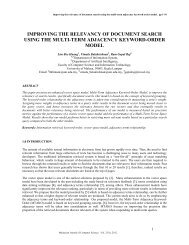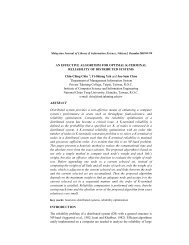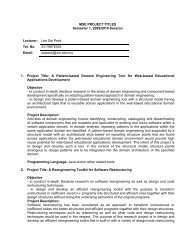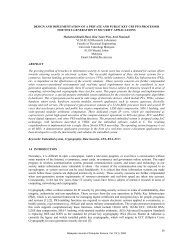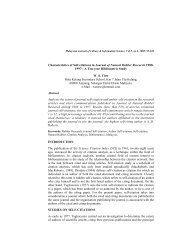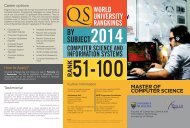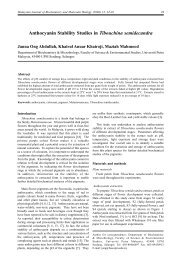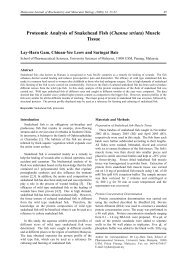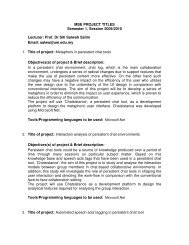Download1 - EJUM
Download1 - EJUM
Download1 - EJUM
Create successful ePaper yourself
Turn your PDF publications into a flip-book with our unique Google optimized e-Paper software.
Babalhavaeji, F. & Jafarzadeh Kermani, Z.Figure 1 presents the conceptual framework of the study.IntentionAttitudeIntrinsicMotivationKnowledgeSharingBehaviourFigure 1: The Conceptual FrameworkRESEARCH METHODOLOGYThe study sampled LIS faculty members working full-time in the universities affiliated tothe Ministry of Science, Research and Technology (i.e. government universities) and IslamicAzad universities (IAU, i.e. private universities) in Iran. The limited number of LIS educators(120) in the mentioned universities has made the authors to use no special samplingtechniques; therefore all LIS faculty members were considered as the research population.Employing survey as the data-gathering technique, a total of 120 questionnaires weremailed out to the LIS faculties from April to August 2010, addressed to their respectiveinstitutions. Out of these 120 questionnaires, 93 were returned, giving a response rate of78.3%.In this study the survey instrument is divided into three sections: section A includesquestions eliciting educators' demographic characteristics (gender, level of education,academic rank, type of university and teaching experience); section B comprises three subsectionsconsist of multiple choice questions to measure knowledge sharing behaviour ofeducators in teaching, research and professional activities; and section C includes itemsrelated to the research variables (attitude, intention and intrinsic motivation), using a fivepointLikert scale (ranging from 1=strongly agree to 5= strongly disagree).The instrument was initially circulated to 15 LIS faculty members in five differentuniversities to determine the understandability of items included in the questionnaire, aswell as to incorporate any useful suggestions that the LIS educators might offer.Improvement and modification including rephrasing and rewording were done based onthe feedback obtained. Cronbach's alpha was used to measure the reliability of items insection C of the questionnaire. According to Sekaran (2003) alpha values greater than 0.70are acceptable for basic research. The results of Cronbach's coefficient alpha are given inTable 1 which indicate that the items are acceptable.Page | 6



